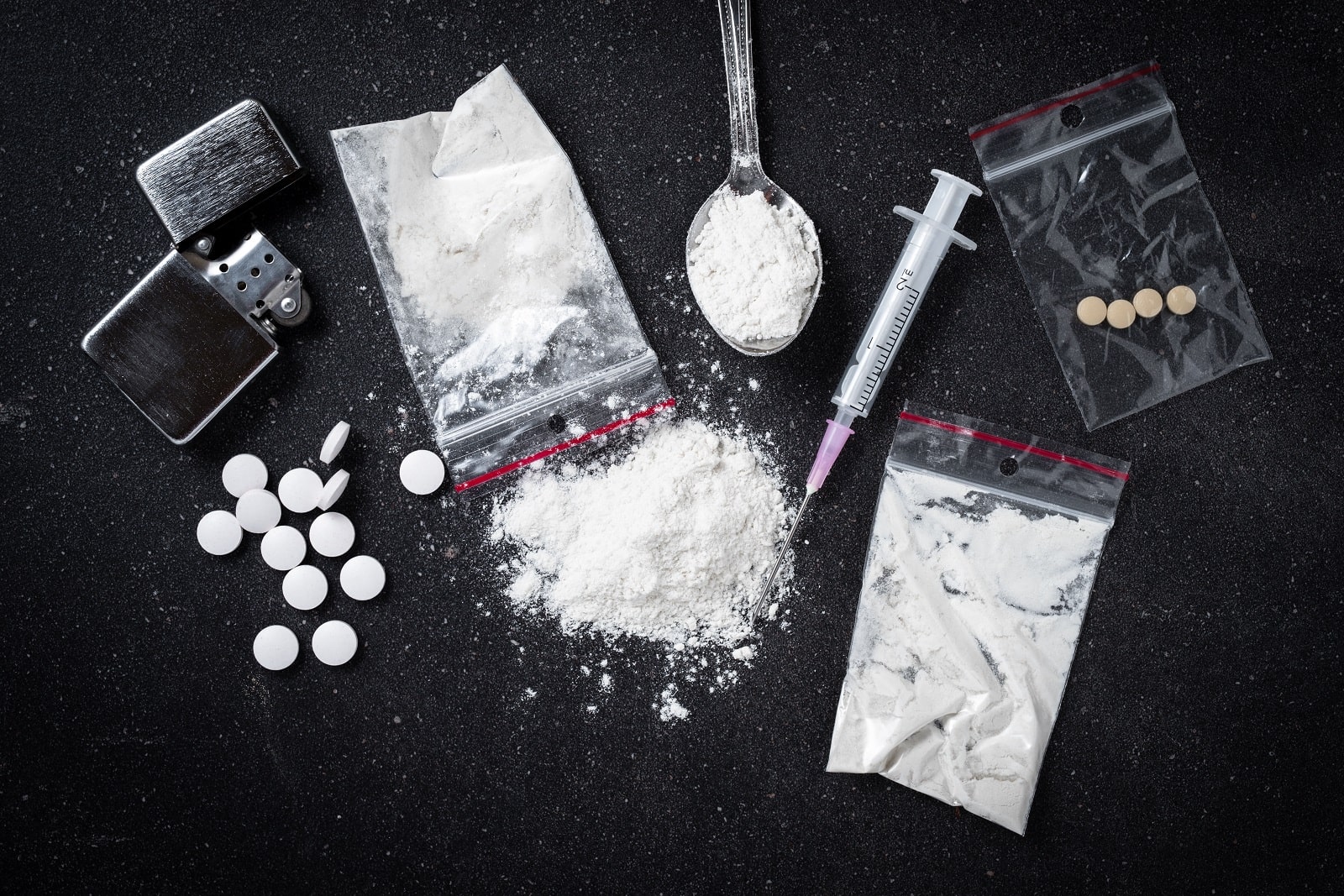Addiction | 4 min read
Common Signs of Meth Addiction
Medically Reviewed By

On February 20, 2023
Written By
On February 20, 2023

Methamphetamine, commonly shortened to meth, is a powerful stimulant known for its ability to increase dopamine, elevate levels of energy, and rapidly influence methamphetamine addiction [1].
Meth comes in two forms: a crystalline powder and glass-like rocks known as crystal meth. Meth in the form of crystalline powder is widely used and frequently snorted. Powder meth is typically smoked or injected. Compared to powdered meth, crystal meth produces a higher peak and stronger physical effects.
Many people dependent on drugs like meth find it difficult to stop using meth alone. The best strategy for dealing with this kind of substance use disorder is to contact a reputable rehab facility and attend a drug recovery program.
What are the Most Common Signs of a Meth Addiction?
A meth addiction can be relatively easy to spot. Its effects on a person’s appearance begin rapidly. Though meth addiction can have a physical manifestation, other signs also happen within the body.
The most common signs of meth addiction include[2]:
- Violent behavior
- Skin sores
- Meth mouth and tooth decay
- Psychotic symptoms
- Mood swings
- Rapid heart rate
- Changes in blood pressure
- Changes in body temperature
- Weight loss
Meth users will experience various changes to and within their bodies. If you or someone you know is beginning to exhibit some of these changes, it is important to seek help immediately to avoid further detriment to yourself.
What are the Long-Term Effects of Methamphetamine Abuse?
Methamphetamine addiction is one of the few illegal drugs that can substantially and quickly alter a person’s physical appearance[3]. While methamphetamine‘s negative consequences can be observed on a person’s outside, the internal repercussions are equally hazardous and severe.
The long-term effects of using methamphetamine include:
- Meth addiction
- Issues with the central nervous system
- Meth mouth
- Missing teeth
- Paranoia
- Delusions
- Hallucinations
- Changes in the brain
- Mental deficits
- Mood swings and changes
- Memory problems
- Weight loss
- Violent behavior
Using meth long-term can do irreparable damage to your body. If you or someone you know has been using meth and has begun to experience effects like the ones mentioned above, you must stop using it and get help immediately.
Meth claims the lives of many who fall into the trap of trying it even just a handful of times. Don’t get stuck in an addiction loop. Instead, get help from a trusted, non-judgmental medical facility today.
Why is it So Hard to Quit Meth?
Methamphetamine is an addictive substance. It’s a potent stimulant with a high potential for addiction that can significantly alter the brain. Dopamine, a neurotransmitter that aids in regulating pleasure and motivation, is released in large amounts into the brain when users use meth. This burst of dopamine, or “rush, ” brings a tremendous surge of pleasure.”
However, once the effects of the drug start to wear off, users may encounter several unpleasant symptoms like irritation, paranoia, and anxiety. Because of these negative effects, some individuals may turn to meth again to feel better or regain the initial high.
What are the Treatment Options for Meth Addiction?
There are many treatment options to approach meth addiction. Depending on the severity of your addiction, one may be better than the other. It is important to ask each question to determine which is appropriate for you.
Inpatient and outpatient facilities are the most popular treatment options for meth addiction. Each has advantages that will depend on your situation.
How Can You Recognize Meth?
Meth identification can be difficult because the substance can have various flavors, tastes, and aromas. It can differ from one batch to the next and from one producer to the next.
Methamphetamine can be found in various shapes and sizes, each with its distinctive appearance. People often buy crystal meth resembling shards of broken glass or crystalline rocks that might be clear, white, grey, or blue-white.
The names “crystal” and “glass” come from the drug’s shard-like, glass-like look. When people think of meth, they typically picture this type of drug. It is also the most common type of meth used by persons with substance use disorders.
Additionally, meth can be found as a powder, tablet, or pill.
Will Health Insurance Cover Treatment for a Meth Addiction?
Most health insurance companies offer coverage that includes the expense of substance use disorder, including meth and other narcotics. Meth addiction treatment is frequently regarded as a type of healthcare.
Is Inpatient or Outpatient Care Better for Meth Abuse?
Both inpatient and outpatient care work to help fight meth abuse and addiction. The goal should be to find the appropriate treatment program for your needs.
Outpatient benefits
For the most part, outpatient therapy enables you to continue your routine and activities while preparing you for life without meth.
You can continue to work, go to school, and take care of your children while undergoing therapy as an outpatient. The physical symptoms of meth detox and withdrawal are addressed, and cognitive behavioral therapy will likely be used to address the influence methamphetamine has on your life.
Inpatient benefits
For a variety of reasons, patients choose residential rehab over outpatient treatment. You are removed from your regular triggers during inpatient rehab, which helps you concentrate on healing. For many, the extra cost is well worth the 24-hour attention they receive at inpatient methamphetamine treatment.
On the other hand, people are sometimes rushed into inpatient meth rehab due to an intervention or other emergency. Similarly, if you have a serious physical dependency, you might need to start your recovery with a short hospital stay while you detox. Medical attention could be required to control the physical side effects of meth detox and withdrawal.
When medical doctors conclude that your meth use puts you or others in danger, such as through seizures, blacking out, or risky activities like driving while intoxicated, inpatient care may be the best option.
Frequently Asked Questions About Meth Addiction
Detoxification, or purging the body of an addictive chemical, is the first step in fighting meth addiction. Although meth detox can involve some challenging withdrawal symptoms, the advantages of beating meth addiction exceed these drawbacks.
To beat intense cravings, it is often the best bet to undergo medical detox at a facility that works with those with substance use disorder.
In addition to receiving medical supervision, detoxing in a treatment facility offers a safer environment free of narcotics.
The general state of a methamphetamine user’s teeth and gums is called “meth mouth.” This is because the effects of meth seriously harm the health of your teeth.
Some signs and symptoms of this condition include:
- poor breath
- gum disease and swelling as a result of unchecked bacterial development
- cavities
- stained and oxidized teeth
- damaged teeth
- a lack of teeth
The damage from using meth might be so severe that the person has trouble speaking or chewing.
Depending on the severity of your meth usage and the detriment done to your teeth, gums, and mouth, you may or may not be able to fix the damage done to your mouth.
Since your addiction is the underlying cause of tooth decay, beating it should be your main goal. You might need to do this by entering a rehab facility that offers meth treatment programs tailored to your requirements.
Using amphetamines has the potential to wreak havoc on your body. While they might feel pleasurable at first, there are serious consequences.
Amphetamines increase respiration, heart rate, and blood pressure while decreasing hunger. Increased dosages may result in fever, sweating, headache, nausea, dizziness, blurred vision, tremors, loss of coordination, and collapse.
Due to the nature of these kinds of drugs, they speed up your brain’s processing systems, which can be dangerous under certain conditions.
Overdosing on meth is a common and serious problem. During the worst of overdoses, it can quickly become life-threatening and even lethal.
Methamphetamine can be smoked, snorted, injected, or taken orally and comes in various forms. The preferred way to use the medicine differs by location and has evolved.
Ascendant NY: Addiction Treatment for Meth Use
You don’t have to struggle alone or leave your loved ones concerned. We know that people with substance use disorders affect their loved ones and themselves. At Ascendant, we assist and compassionately guide you on your path to restoration. Contact us immediately to discuss treatment options if you or someone you know is struggling with a meth addiction.
Ascendant New York Editorial Guidelines
Here at Ascendant New York, we understand the importance of having access to accurate medical information you can trust, especially when you or a loved one is suffering from addiction. Find out more on our policy.
- Radfar, S. R., & Rawson, R. A. National Library of Medicine. (2014). Current research on Methamphetamine: Epidemiology, medical and psychiatric effects, treatment, and harm reduction efforts. Retrieved December 30, 2022, from https://www.ncbi.nlm.nih.gov/pmc/articles/PMC4354220/ on 2022, December 30
- Centers for Disease Control and Prevention. (2020, March 26). Patterns and characteristics of methamphetamine use among adults – United States, 2015–2018. Retrieved from https://www.cdc.gov/mmwr/volumes/69/wr/mm6912a1.htm on 2022, December 30
- Galbraith, N. National Library of Medicine. (2015, October). The methamphetamine problem: Commentary on … psychiatric morbidity and socio-occupational dysfunction in residents of a drug rehabilitation centre. Retrieved from https://www.ncbi.nlm.nih.gov/pmc/articles/PMC4706185/ on 2022, December 30





